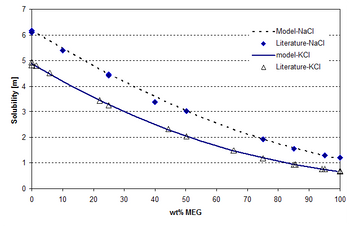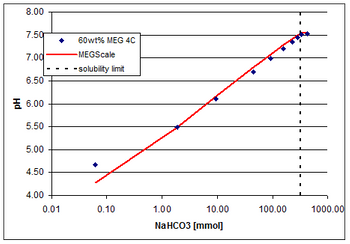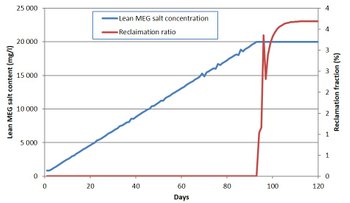Services
MEG systems
MEG systems
Scale Consults personnell has worked with MEG systems, MEG chemistry and MEG processing for 20 years. We have a deep understanding of the chemistry of MEG loops, operation strategies, which parameters to monitor and optimization of MEG loops and MEG processing.
The ScaleSim software has a special MEG module which is specialized for simulations of chemistry in MEG systems and how MEG influences salt solubility and scale risk.
Scale Consult can help with:
- Design of MEG loops and MEG processes (MEG regeneration and reclamation)
- Operation strategies for MEG loops and field with contineous MEG injection
- Set up sampling/monitoring programs for MEG loops
- Simulate chemistry of MEG loops, inclluding scale potentials, salt precipitation, pH levels, organic acids accumulation etc.
- Trouble shoot MEG processes that does not work as intended
Challanges in MEG systems
Mono Ethylene Glycol (MEG) is used to prevent formation of gas hydrates, both in pipelines and processes. A typical application is for long transport pipelines from offshore producers with tie-back to an onshore (or offshore) process plant. As the gas/condensate cools down, water will condense and form an aqueous phase. To prevent hydrate formation, MEG is injected at the pipeline inlet and will mix with water inside the pipeline and prevent hydrate formation.
At the process facility, the water-MEG mixture (called Rich MEG) is separated from the gas/condensate and distilled to regenerate MEG with high concentration (called Lean MEG). This is called MEG regeneration. The Lean MEG is then pumped via separate pipelines back to the injection point. This cycle is often referred to as the MEG loop.
If formation water (containing various ions and salts) is produced into the MEG loop, the Rich MEG will be contaminated with salts. These salts will not be removed by the distillation and will accumulate in the MEG loop. Eventually, they will precipitate and can form scale somewhere. To remove salts from the MEG, it is necessary to have a reclamation process.
MEG changes the chemistry, it changes solubility of salts, it changes solubility of gas, and it changes pH. With the MEG-module in ScaleSim, we can simulate the chemistry of MEG loops:
- How MEG influences scale potentials
- How salts accumulate in a MEG loop and where they can form scale
- The effect of adding pH stabilizer and how it influences pH and scale potentials
- Simulate MEG regeneration and MEG reclamation and find minimum required reclmation rate to avoid salt precipitation in the MEG loop
Measured and simulated solubility of NaCl and KCl in water-MEG mixtures.
Measured and simulated pH in Rich MEG at 4°C as function of pH stabilizer concentration.
Accumulation of salt in a MEG loop without reclaimer in operation, and then startup of reclaimer to keep salt content below 20 000 mg/l.



